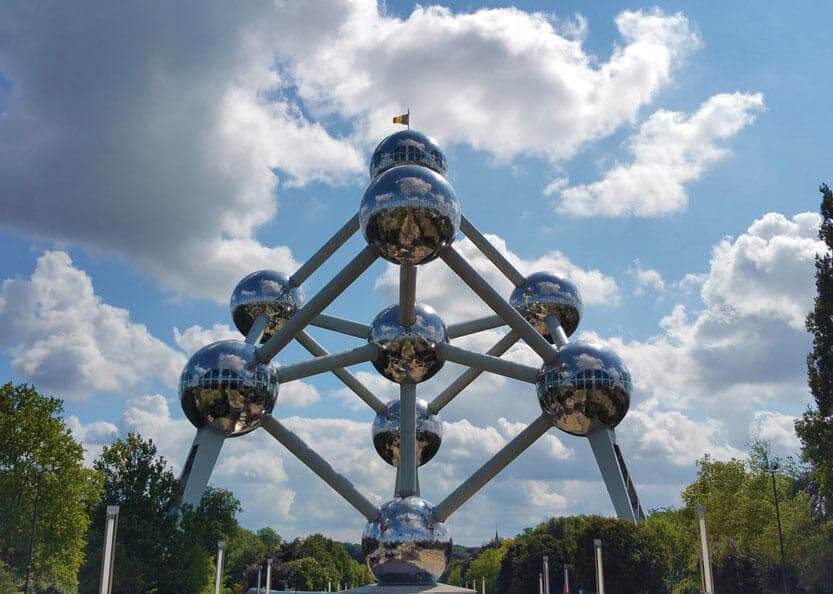Post of the Month
Emotion, memory’s ‘fixing agent’
- Emotion enhances memory through electrical charges
From a neuro-cognitive perspective, a presenter aims to create three phenomena in the audience’s minds: attention (that’s the role of stories), understanding (including via metaphors and images) and retention (supported by emotion). Scientists now think that information laid down in memory isn’t stored physically in a specific area of the brain. Rather, it is saved in the form of a particular synaptic pathway which is called a memory trace.
Whenever emotions are involved, the audience remembers the message even better. Essentially, an emotion generates extra energy in the body (similar to lightning or electrical discharges), which in turn creates more neural connections, leading to deeper traces in the brain. The deeper the trace, the more durable: a deep furrow will take longer to fade than a shallow line…
That’s how the best scriptwriters and directors manage to time the most intense moment in the film with the delivery of its main message. After the gunshot, Bambi hears the Prince of the Forest say: “your mother can’t be with you any more”. And we get it: life is both beautiful and harsh. Unforgettable.
http://www.apa.org/science/about/psa/2012/02/emotional-arousal.aspx
http://www.memory-key.com/memory/emotion
https://www.psychologistworld.com/emotion/emotion-memory-psychology
It happened to them first
On the day of the ‘big’ presentation, it’s too late to practise
- Every single day offers opportunities for every process
Presenting effectively to a large audience is challenging, even for the most experienced. Even after Winning Hearts & Minds, being the best presenter that you can be is unlikely to happen overnight. We suggest you continue working on it, and do so a little bit every day.
We present every time we open our mouth to put forward an idea or a project. Whether it be in front of two people, or 100. At the next low-stakes meeting, behave like a presenter. Ask yourself what you’re trying to achieve. Make sure you think before you speak: what is the main concern in the minds of those I’m going to address? What is the unexpected statement that will grab their attention?
Before it’s your turn, write down two or three points that will answer the questions they haven’t yet formulated. Start your intervention / contribution by talking about them, their issues, their perspective, and show them how it links to yours.
Support your ideas with personal examples, or a metaphor that will illuminate your argument. Look them in the eye. Project your voice clearly.
Have a go at each of these processes in turn – or simultaneously, if you prefer – when there’s no pressure. You’re ‘practising’ – painlessly, enjoyably, even! And on the day of the ‘big one’, get yourself ready and start: you’ll discover you’ve made huge strides.
What’s in it for you?
Cartography reflects a vision of the world
- Our presentations often resemble the ethnocentrism of map makers.
Cartography appears to be a fact- and figure-based scientific undertaking and therefore not contestable, when in reality it is eminently subjective. The maps in our classrooms that place Europe at the centre of the world and North at the top were the results of deliberate choices, with the surface areas of countries and continents often inaccurate. These choices were made to serve needs (e.g maritime routes), ambitions (e.g imperialism) and an ethno-centric vision of the world. Take a look:
http://edition.cnn.com/2016/08/18/africa/real-size-of-africa/
www.thetruesize.com
https://kjohns25.wordpress.com/2013/09/08/cartography-as-imperialism/
Similarly, professional presentations show ethnocentrism when, in front of our audiences, we extol our values, the quality of our work or the success of our methods. But if we aim to sell them our ideas, products or services, the least we could do is to place their world at the centre of our map. That’s if we wish to understand their needs and questions, of course.
And what else?
What philosopher Bruce Lee said…
- Working on an image is a waste of energy
“Where some people have a self, most people have a void, because they are too busy in wasting their vital creative energy to project themselves as this or that, dedicating their lives to actualizing a concept of what they should be like rather than actualizing their potentiality as a human being, a sort of “being” vs. having — that is, we do not “have” mind, we are simply mind. We are what we are.”
For us presenters, this thought resonates strongly: let’s not waste time wondering how we look; let’s do the work, to the best of our abilities, and communicate.
https://www.brainpickings.org/2017/02/22/in-my-own-process-bruce-lee/
Najberg Milne news
London, Paris and Brussels dates
Forthcoming open courses:
Brussels: 6-7 June (Captiver & Convaincre). Contact us at info-belgium@najbergmilne.com to book places in Brussels.
London: 28-29 June, 7-8 September, 29-30 November (Winning Hearts and Minds). Contact us at info@najbergmilne.com to book places in London.
Paris: 7-8 November (Captiver & Convaincre). Contact us at info-france@najbergmilne.com to book places in Paris.
Link of the month
Our culture says we come from somewhere
- Our genes say we come from everywhere.
Here is an original initiative. In order to stimulate the desire to travel in its target market, the travel organisation Momondo commissioned a study with 7292 people in 18 countries, and went even further by offering a few volunteers the chance to analyse their DNA. The concept: “give us a bit of saliva and we’ll show you your family tree.” The result: a marketing campaign full of emotion, demonstrating how culture separates us but biology – aka the facts – does the opposite:
https://www.youtube.com/watch?v=tyaEQEmt5ls
(*) https://cdnprodmomondo.blob.core.windows.net/i-3/content/documents/2016.04.19value-of-travelling.pdf
 Najberg Milne
Najberg Milne


